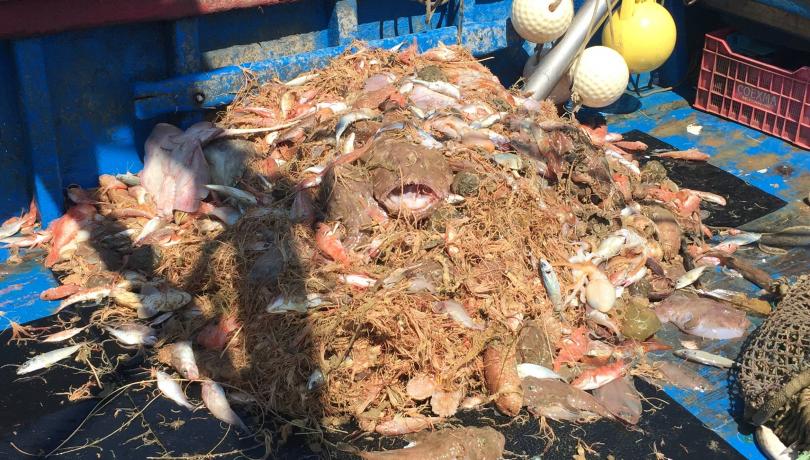Researchers from the ICM and the UdG propose an appropriate management for these species based on a balance between exploitation and conservation.

A new study by the Institut de Ciències del Mar (ICM) and the SeaHealth research group of the Institute of Aquatic Ecology of the University of Girona (UdG) reveals that certain sea beds, where trawling is practiced, are home to species that contain key bioactive molecules for the production of new drugs useful, for example, for treating cancer. Specifically, the study refers to the crinoid beds, animals that belong to the phylum of echinoderms, that also include starfish, brittle stars, sea urchins and sea cucumbers.
In the Mediterranean, crinoid beds are found between 120 and 170 meters deep and are home to a large number of marine species, many of commercial interest. However, despite their vulnerability to fishing, they are not adequately protected, which would be key to the development of new drugs of marine origin, not only to fight cancer, but also other diseases of bacterial or viral origin. This would also contribute to the conservation and sustainable exploitation of species of fishery interest that take refuge in these habitats.
According to the study, published this February in the journal Marine Drugs, 14% of the species that make up the discards from trawling carried out in crinoid aggregation habitats have molecules with anti-tumor, anti-bacterial, antioxidant and anti-hypertensive properties, among others.
"According to the bibliography consulted for this study, these molecules are present in a great diversity of marine organisms, from sharks to ascidians or soft corals. These species live in crinoid beds where they are fished and discarded", explains the first author of the study and ICM researcher Alfredo García de Vinuesa, who adds that another 16% of the species that compose this discard could contain molecules with bioactive potential, as they have been observed in animals of the same genus.
Another relevant finding from the study, in which researchers Montserrat Demestre (ICM), Arnau Carreño (UdG) and Josep Lloret (UdG) have also participated, is that 68% of the species or genera with bioactive molecules have a medium or high vulnerability to trawling. For this reason, this work, carried out within the CriMa Project, suggests protecting them by giving priority to obtaining their bioactive molecules synthetically in the laboratory, or by managing their exploitation in a highly controlled way.
"In the Mediterranean, crinoid beds are considered sensitive and highly productive habitats, but they are not protected from the impact of fishing. However, we are working together with trawl fishermen to achieve a sustainable exploitation that benefits both fishermen and these habitats", says García de Vinuesa.
For this project, the scientific team carried out some experimental campaigns on fishing boats to identify species discarded from trawl fishing on crinoid aggregation habitats. They also conducted an extensive literature search for bioactive compounds that may be present in these species, which is particularly innovative, as to date most species with bioactive compounds have been located in much shallower habitats closer to shore.
"We located a crinoid bed in the fishing grounds adjacent to the port of Blanes frequented by the Blanes trawling fleet and embarked on several campaigns to obtain samples from the discarded fishes. Then, we investigated which of these species or congeners -animals of the same genus- had previously been shown to possess bioactive molecules", explains García de Vinuesa. He is convinced that the study will open the door to future research that can provide further details, in the laboratory, of the bioactive potential of these marine species and their potential use in the field of marine biotechnology.
Finally, the scientific team assessed the vulnerability to trawling of species or genera with bioactive molecules, which will serve to propose a type of appropriate management of these animals and of the crinoid beds that takes into account a balance between their exploitation and conservation.